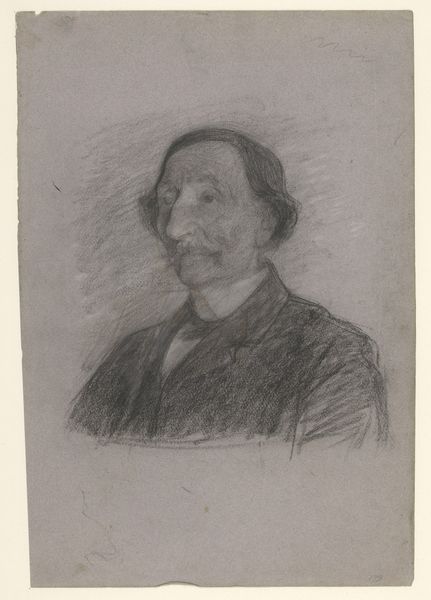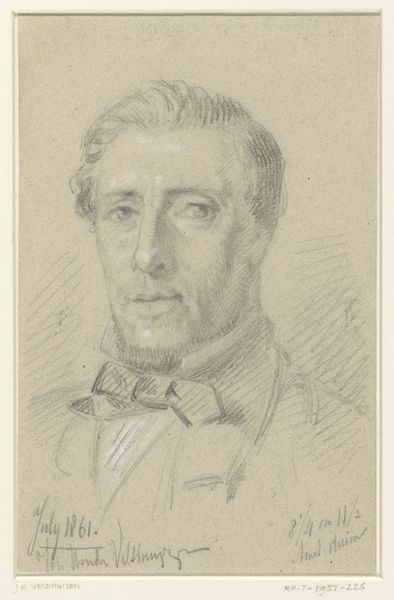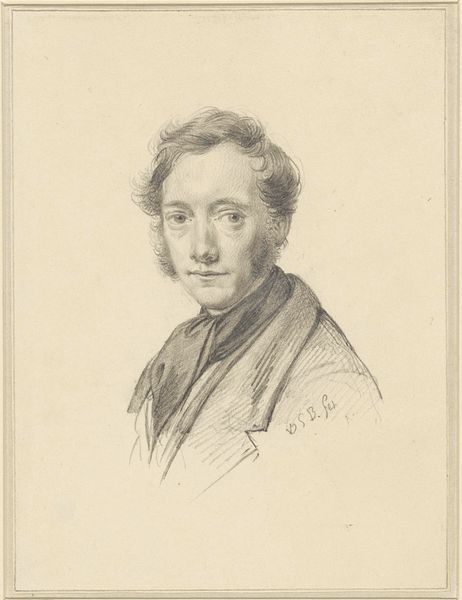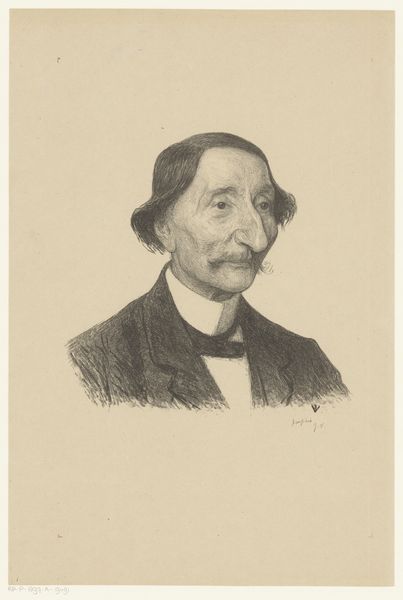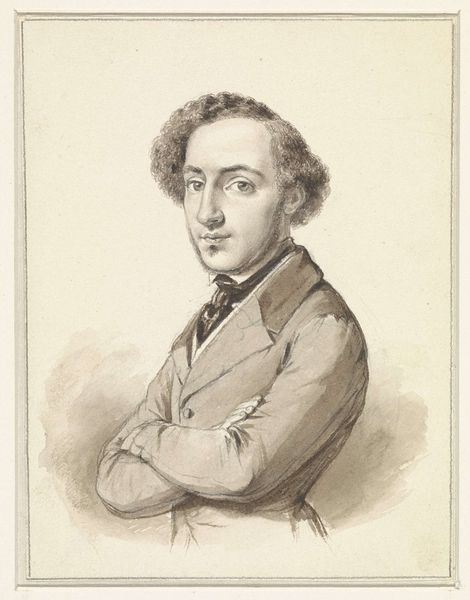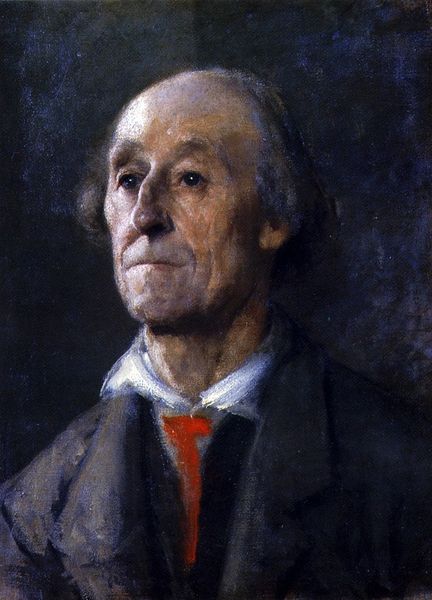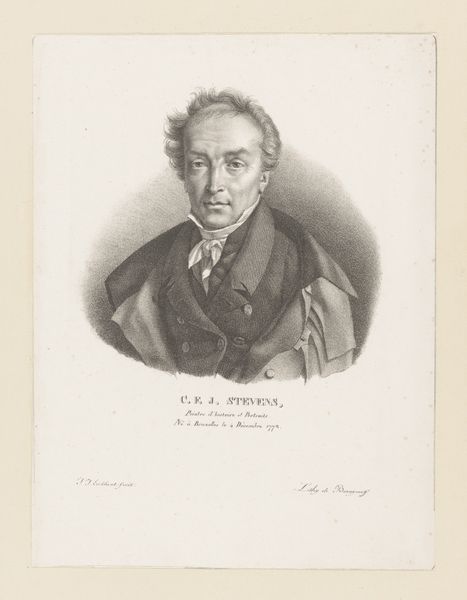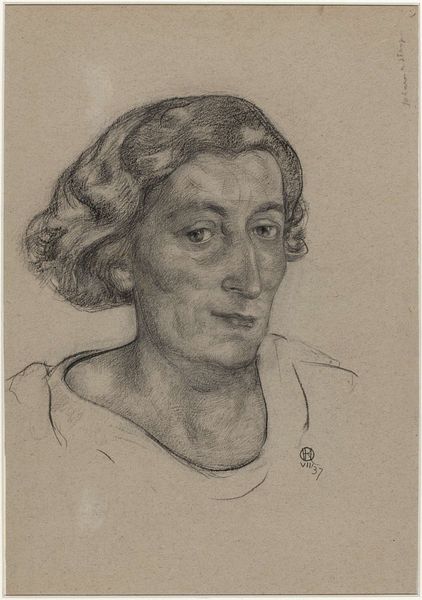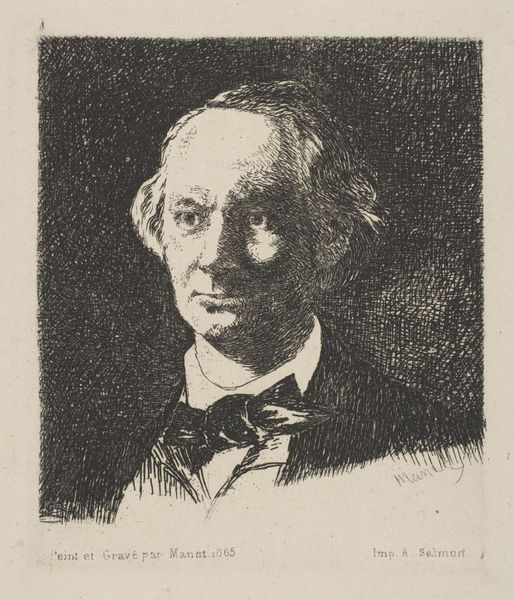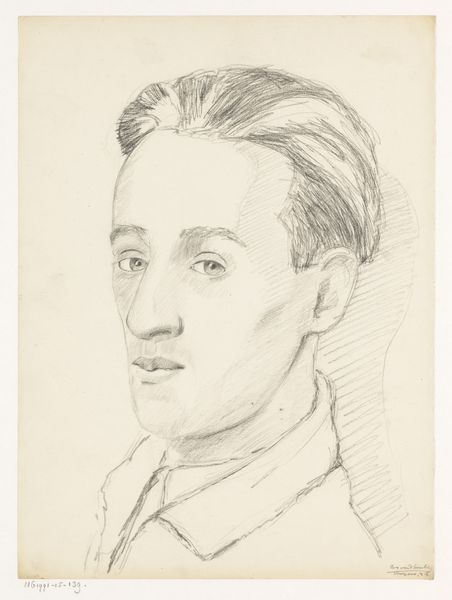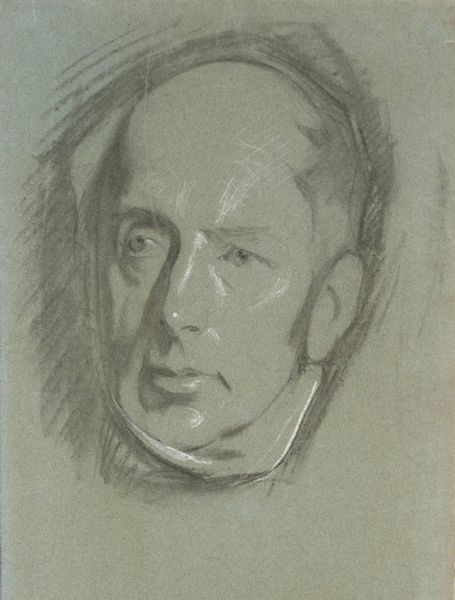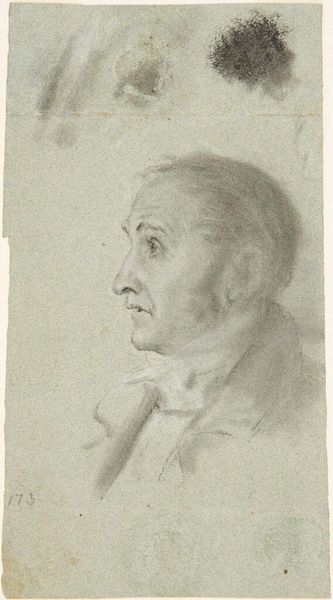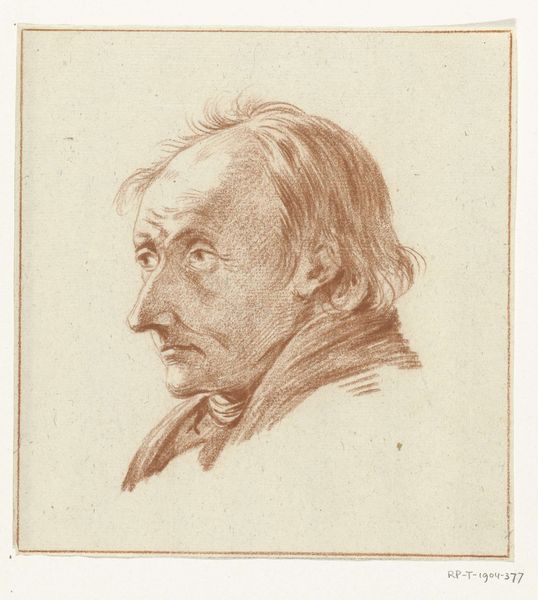
drawing, paper, chalk, charcoal
#
portrait
#
drawing
#
facial expression drawing
#
self-portrait
#
paper
#
romanticism
#
chalk
#
portrait drawing
#
charcoal
#
history-painting
#
portrait art
Dimensions: 155 × 130 mm
Copyright: Public Domain
Curator: Adolph Menzel's "Head of an Old Man," dating from around 1850 and held here at the Art Institute of Chicago, offers an intimate glimpse into aging. What's your immediate impression? Editor: The first thing I notice is the tangible quality of the drawing. The charcoal and chalk on paper create a wonderful depth and texture that seems to capture more than just a likeness; it's like you could feel the man's very being by analyzing how Menzel works. Curator: Absolutely. Menzel was working during a period that witnessed dramatic social and political upheaval, and though this work appears to be a study, it resonates with the Romantic era's fascination with individual emotion and human experience. The detail he gives to the subject's expression evokes contemplation and perhaps even a touch of melancholy. Editor: I'm especially drawn to the use of materials to create form. See how the dense, dark charcoal defines the shadows and emphasizes the skeletal structure, especially around the eye sockets and jawline? Then, the subtle touches of chalk highlight the skin, almost giving the face a lived-in texture, but also considering light as a physical property of the pigment. The visible strokes are such an integral part of understanding its making. Curator: Menzel’s dedication to representing ordinary people reflects broader cultural shifts that challenged traditional aristocratic portraiture. His history painting and focus on realistic, unidealized subjects placed importance on capturing a range of humanity, even in preparatory works. His ability to elevate an anonymous figure aligns with the democratic spirit emerging in Europe at the time. Editor: I wonder about the paper itself, though. Was it mass-produced? Was it handmade? The context around that material might offer deeper insights. Regardless, there's a real intensity in his direct observation, brought about by the direct physical contact Menzel had with these specific materials. This feels far removed from the smooth, idealized portraits that had been fashionable for so long before. Curator: Seeing it through the lens of materials and processes does sharpen our sense of Menzel’s focus. I think the study embodies a pivotal moment in art history: an artist democratizing visual language in portraying humanity's complex emotional spectrum. Editor: And for me, it highlights art as a tangible, material thing deeply connected to labor and production that can be analyzed with a specific set of critical vocabulary, opening dialogues across periods and media.
Comments
No comments
Be the first to comment and join the conversation on the ultimate creative platform.
